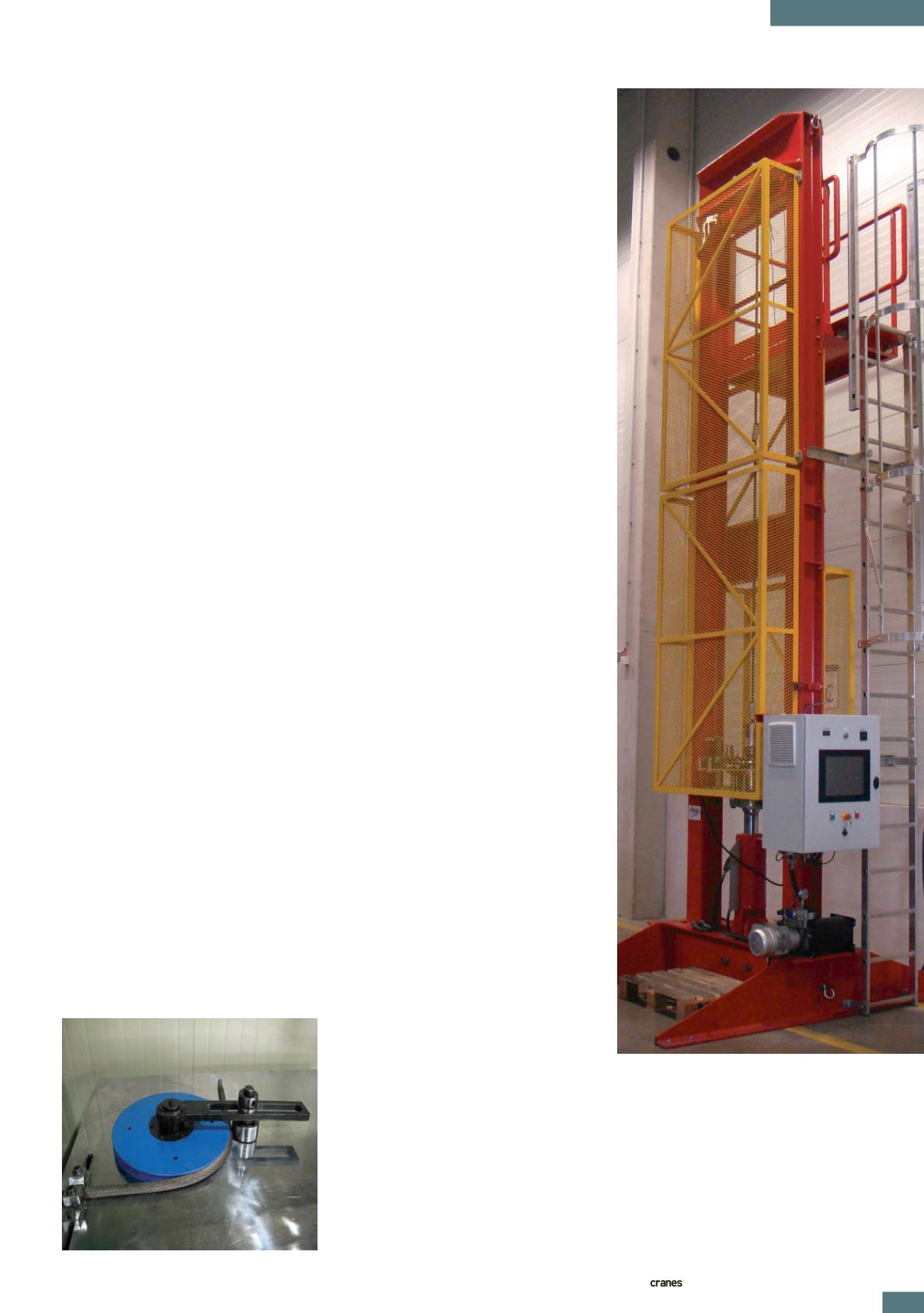
INTERNATIONAL AND SPECIALIZED TRANSPORT
■
SEPTEMBER 2013
WIRE ROPE
45
D
rum crushing, multi-lay spooling
and rotation resistance are well
known issues with ropes in lifting
applications throughout the crane industry
and rope manufacturers have to take these
issues into account when producing rope.
A spokesperson from Verope, a
manufacturer of wire ropes, explains
the challenges behind designing an
appropriate rope for multi-layer
drum spooling.
“To cope with heights of over 100
metres in multiple reeving applications,
more than 1,000 m of rope length is
spooled,” Geraldine Kortas, marketing
and communication at Verope explains,
“In the mining industry, for example,
it is typical to work with very large D/d
ratios (drum diameter/rope diameter,
D/d > 100). Mobile crane applications,
on the other hand, deal with confined
spaces and typical D/d ratios of 20. The
spooling of the rope is then made on
specially designed rope drums, which
allow winding into virtually any number of
rope layers. This technique is known as the
synthetic fibres, Dyneema for example,
has developed a bending-enhanced fibre,
Dyneema XBO, for increased flexibility
and increased bending cycles. “A result
of using this fibre means that ropes made
with Dyneema XBO fibre match or exceed
steel wire rope in bending cycles to failure
and can even be more flexible,” a company
spokesperson says.
Lebus grooving.”
As a result of these requirements
Verope designs its ropes with rotational
stability, a high bending fatigue, high
breaking strength and resistance to wear.
This is to ensure that the rope can handle
single-fall to 25-fall configurations, a
company spokesperson adds.
As Kortas explains, however, sometimes
compromises have to be made when
designing a rope for these applications. “A
thicker wire will be more resistant to wear,
however, it is less flexible and there will be
a compromise regarding bending fatigue.
A thinner wire will achieve higher bending
fatigue values, however, it is less resistant
to wear and reduction of the rope diameter
will happen sooner.”
To overcome these factors Verope
wire ropes have a specially designed rope
lubricant to maximise wear resistance.
Their range of rotation resistant ropes
include verotop, a hoist rope suitable
for mobile, crawler and offshore cranes;
verotop E, a hoist rope for construction
cranes and verotop XP, a hoist rope for
deck cranes. Lifting heights of the rope
range from up to 50 m to more than 70 m
depending on rope type and application.
Synthetic fibre
When designing a rope with a high
bend fatigue, the fibres that are used in
its development is another important
area that rope manufacturers have to
take into consideration. Manufacturer of
Requirements for ropes are changing throughout
the crane industry. LAURA HATTON spoke to rope
manufacturers about the challenges ahead and what
new products they have to meet customer demands
The future
for ropes
>
The twist torque test machine at Verope
Testing machines are available at Verope to
determine rope flexibility


